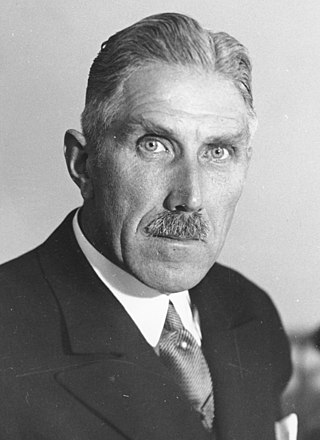
Franz Joseph Hermann Michael Maria von Papen, Erbsälzer zu Werl und Neuwerk was a German politician, diplomat, Prussian nobleman and General Staff officer. A national conservative, he served as the chancellor of Germany in 1932, and then as the vice-chancellor under Adolf Hitler from 1933 to 1934. Papen is largely remembered for his role in bringing Hitler to power.

The Gleiwitz incident was a false flag attack on the radio station Sender Gleiwitz in Gleiwitz staged by Nazi Germany on the night of 31 August 1939. Along with some two dozen similar incidents, the attack was manufactured by Germany as a casus belli to justify the invasion of Poland. Prior to the invasion, Adolf Hitler gave a radio address condemning the acts and announcing German plans to attack Poland, which began the next morning. Despite the German government using the attack as a justification to go to war with Poland, the Gleiwitz assailants were not Polish but were German SS officers wearing Polish uniforms.
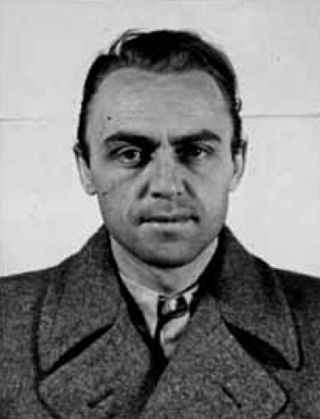
Alfred Helmut Naujocks, alias Hans Müller, Alfred Bonsen, and Rudolf Möbert, was a German SS functionary during the Third Reich. He took part in the staged Gleiwitz incident, a false flag operation intended to provide the justification for the attack on Poland by Nazi Germany, which ultimately culminated in starting World War II.
Franciszek Honiok was a Polish man who is famous for having been the first known victim of World War II, on the evening of 31 August 1939.

Operation Himmler, also called Operation Konserve, consisted of a group of 1939 false flag undertakings planned by Nazi Germany to give the appearance of Polish aggression against Germany. The Germans then used propaganda reports of the events to justify their invasion of Poland, which started on 1 September 1939. Operation Himmler included the Germans staging false attacks on themselves—directed at innocent people, such as civilians and concentration camp prisoners. The operation arguably became the first act of the Second World War in Europe.
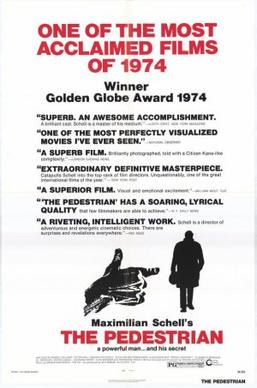
The Pedestrian is a 1973 film directed by Maximilian Schell. It is about the trial of an elderly war criminal. The film was a co-production between companies in Germany, Switzerland and Israel; the movie was distributed in the United States by Cinerama Releasing Corporation.

The 32nd Infantry Division of the German Army was mobilized on 1 August 1939 for the upcoming invasion of Poland. At that time, it consisted of the usual German Infantry Division elements: three infantry regiments of three battalions each, one three-battalion regiment of light artillery, one battalion of heavy artillery, a Panzerjäger (anti-tank) Battalion, a reconnaissance (Aufklärungs) Battalion, a Signals Battalion, a Pioneer (Engineer) Battalion, and divisional supply, medical, and administrative units.

Lutz Hachmeister was a German media historian, award-winning filmmaker and journalist. He particularly gained international attention for directing the 2005 film The Goebbels Experiment, co-produced by the BBC and the Canadian History channel, and featuring Kenneth Branagh as the narrator for the Goebbels Diaries. In 2006 Hachmeister established the Institute for Media and Communication Policy (IfM) in Berlin and Cologne, which is strongly tied to the Anglo-American media scene.
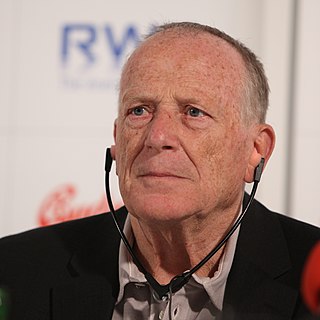
Wolfgang Kohlhaase was a German screenwriter, film director, and writer. He was considered "one of the most important screenwriters in German film history", and was one of the GDR's most well-known and prolific film screenwriters. Kohlhaase was awarded the Honorary Golden Bear at the 2010 Berlin International Film Festival.
Operacja Himmler is a Polish historical film. It was released in 1979. It tells about the Gleiwitz incident.

The Hunter of Fall is a 1936 German drama film directed by Hans Deppe and starring Paul Richter, Franz Loskarn and Rolf Pinegger. It is based on the 1883 novel The Hunter of Fall by Ludwig Ganghofer.

Hannjo Hasse was an East German actor. Over his nearly four decade career, he was best known for his roles in the films of Lebende Ware (1966) and Walter Defends Sarajevo (1972), as well as the television series Rote Bergsteiger (1968) and Archiv des Todes (1980).

Reinhold Schünzel was a German actor and director, active in both Germany and the United States. The son of a German father and a Jewish mother, he was born in St. Pauli, the poorest part of Hamburg. Despite his ancestry, Schünzel was allowed by the Nazis to continue making films for several years until he left in 1937 to live abroad.

Karl Erich Rudolf Formis was a German engineer and radio engineer at the Süddeutsche Rundfunk AG (SÜRAG) subsidiary of Reichs-Rundfunk-Gesellschaft. Formis was a pioneer of the German amateur radio movement. During the period of Nazi rule in Germany, he transmitted anti-Nazi radio broadcasts from Czechoslovakia for the Black Front organisation, using a self-built shortwave radio. Formis was murdered by the Sicherheitsdienst on the orders of Reinhard Heydrich.
Arthur Brauss is a German actor, perhaps best known for his work in Sam Peckinpah's Cross of Iron.
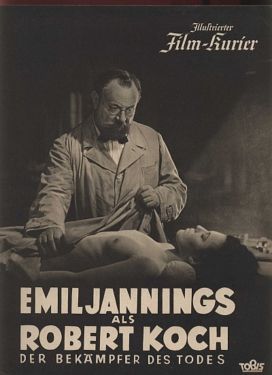
Robert Koch is a 1939 Nazi propaganda film directed by Hans Steinhoff and starring Emil Jannings, Werner Krauss and Viktoria von Ballasko. The film was a biopic of the German pioneering microbiologist Robert Koch (1843–1910). It was shot at the Johannisthal Studios in Berlin and premiered at the city's Ufa-Palast am Zoo. The film was made by the Tobis Film company, and was also distributed in the United States by the largest German studio UFA.
The Man with the Limp is a 1928 German silent film directed by Willy Reiber and Franz Seitz and starring Christa Tordy, Alfred Abel and Carmen Cartellieri.

The Villa in Tiergarten Park is a 1927 German silent romance film directed by Franz Osten and starring Joe Stöckel, Aud Egede-Nissen, and Elsa Krueger. It still survives unlike many films from the silent era.
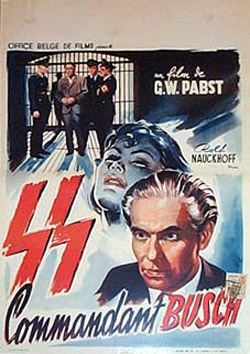
Duel with Death is a 1949 Austrian war drama film directed by Paul May and starring Rolf von Nauckhoff, Annelies Reinhold, and Fritz Hinz-Fabricius. The film portrays the Austrian resistance to Nazi Germany during the Second World War.















